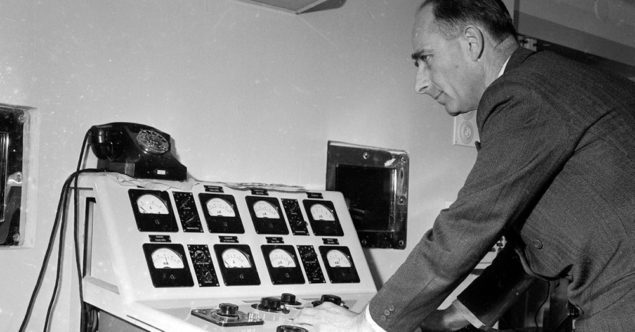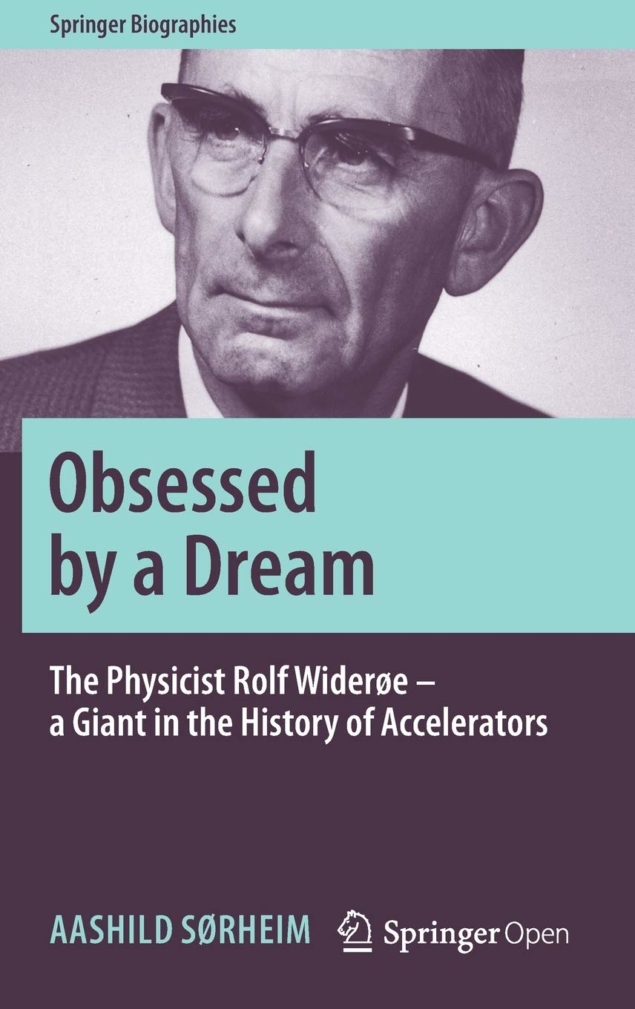Obsessed by a Dream: The Physicist Rolf Widerøe – A Giant in the History of Accelerators, by Aashild Sørheim, Springer

The betatron is an early type of MeV-range electron accelerator which uses the electric field induced by a varying magnetic field to accelerate electrons, or beta particles. It operates like a transformer with the secondary winding replaced by a beam of electrons circulating in a vacuum tube. It was invented by pioneering Norwegian accelerator physicist Rolf Widerøe when a student in 1925. Since the construction failed at the time, he had to find another theme for his thesis, and so in 1927 he constructed the first linear accelerator (50 keV), before later proposing the principle of colliding beams to fully exploit the energy of accelerated particles. Through these innovations, Rolf Widerøe decisively influenced the course of high-energy physics, with betatrons shaping the landscape in the early days, and linear accelerators and colliding beams becoming indispensable tools today.

Aashild Sørheim, a professional writer, now presents a new biography of this visionary engineer, who had a seminal impact on accelerator physics. Her book covers Widerøe’s whole life, from 1902 to 1996, and from his childhood in a well-to-do family in Oslo to his retirement in Switzerland. Certainly, many who read Pedro Waloscheck’s 1994 biography, The Infancy of Particle Accelerators: Life and Work of Rolf Widerøe, will be curious how this new book will complement the former. Sørheim‘s new offering is based on new documentary evidence, the result of painstaking sifting through archives, and a large number of interviews. She has opened new perspectives through her interviews, and the access she has gained in several countries to hitherto restricted archives has provided a wealth of new material and insights, in particular in relation to the second world war. Sørheim’s book focuses not on physics or technology, but on Widerøe himself, and the social and political environment in which he had to find his way. In particular, it gravitates to the question of his motivation to work in Germany in the troubled years from 1943 to 1945, when he constructed a betatron, the accelerator he had invented two decades earlier while a student in Karlsruhe.
Occupied Oslo
In the most interesting parts, the book provides background information about the entanglement of science, industrial interests and armament, and in particular the possible reasons for the “recruitment” of Rolf Widerøe in occupied Oslo in the spring of 1943 by three German physicists mandated by the German air force, who insinuated that willingness to cooperate might well help to improve the conditions of his brother Viggo, who was in prison in Germany for helping Norwegians escape to England. The apparent motivation was that a powerful betatron could produce strong enough X-rays to neutralise allied bomber pilots. Though leading German scientists quickly discovered this to be nonsense, the betatron project was not interrupted. The book describes the difficult working conditions in Hamburg, and the progress towards a 15 MeV betatron. Among the key players was Widerøe’s assistant Bruno Touschek, who was finally arrested by the Gestapo in 1945 as his mother was Jewish. It was during this time that Widerøe patented his idea to use colliding beams to maximise the energy available, against the advice of Touschek, who found the idea too trivial to publish. It was the Touschek though, who in 1961 used first used this principle in ADA, the e+e– ring in Frascati which was the first collider of the world.
Widerøe faced official prosecution on the ludicrous charge of having helped develop V2 rockets
After Widerøe’s return to Oslo in March 1945, when the betatron was operational and the advancing English army made a study of a 200 MeV betatron illusionary, he faced official prosecution on the ludicrous main charge of having helped develop V2 rockets, explains Sørheim. Released from prison after 47 days, he got away without trial, but had to pay a substantial fine. Unemployed, seeing no basis for pursuing his dream of further developing betatrons in his home country, and with the stigma of a collaborator in the understandably overheated atmosphere of the time, he moved his family to Switzerland in 1946. One chapter, strangely put near the beginning of the book, describes how Widerøe then became a successful leader of the betatron production at Brown-Boveri in Switzerland, a respected lecturer at the ETH in Zurich and a promoter of radiation therapy until late into his retirement. He was a CERN consultant in the early days, and worked with Odd Dahl and Frank Goward in Brookhaven 1952 where they became acquainted with the alternating-gradient focusing principle which was then boldly proposed to the CERN Council as basis for the design of the 25 GeV Proton Synchrotron.
The book leaves the reader somehow overwhelmed by the amount of material presented, the non-chronological presentation, and the many repetitions of the same facts, conveying the impression that the author had difficulty in putting the information in a coherent order. However, the many interviews and new documentary evidence, including a hitherto unknown letter from his brother Viggo, open novel perspectives on this extraordinary engineer and scientist who, besides receiving many honours abroad, finally also received recognition in his home country, after a lengthy reconciliation process.








